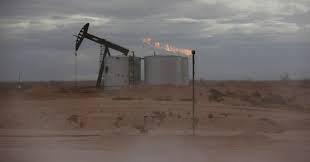Texas, the home of the oil and gas industry, is facing a new threat: earthquakes. In the past few weeks, two strong earthquakes have shaken the Lone Star State, and experts believe they are part of a surge of seismic activity related to the production of oil and gas.
This is not a phenomenon that Texans are used to, as their state is not considered to be seismically active. However, the earthquakes have been linked to the oil and gas industry and their activities. The first of the two quakes was a magnitude 4.1, and it rocked a small town near the city of San Angelo on May 19th. The second quake was a magnitude 4.8 in the same area on June 1st. Both of these earthquakes were powerful enough to be felt by people living in the area.
The cause of the quakes is believed to be the injection of wastewater from oil and gas production into underground disposal wells. This wastewater is created during the extraction process and contains chemicals and other substances that are pressure-sensitive, and when it is injected into the ground at high pressure it can cause the Earth to shake.
The Texas Department of Licensing and Regulation has since ordered that all disposal wells within a 5-mile radius of the epic center of the earthquakes be shut down, in order to reduce the risk of further seismic activity. The agency is also working with the oil and gas industry to develop new safety protocols and procedures to prevent more earthquakes from occurring.
In the meantime, people in the area are on edge, as they are not used to feeling the ground shaking beneath them. Earthquakes are a reminder of how humans can affect and alter our environment, even when we don’t fully understand the consequences of our actions.
It is yet to be seen how the earthquakes in Texas will affect the oil and gas industry and its activities going forward. For now, all Texans can do is hope that the earthquakes will not become a regular occurrence, and that the production of oil and gas will not cause any more seismic activity in the future.


